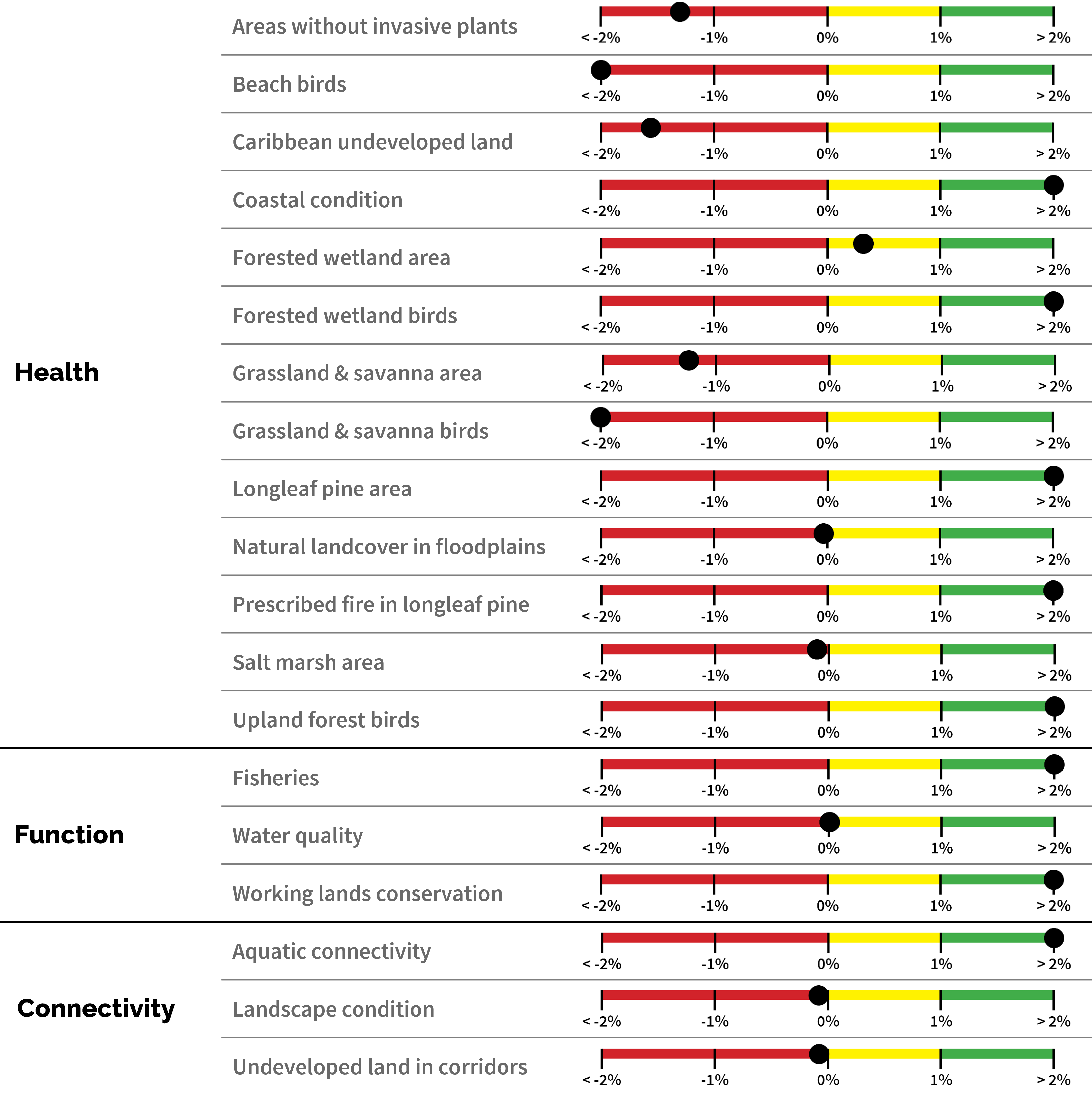Our Goal
A 10% or greater improvement in the health, function, and connectivity of Southeastern ecosystems by 2060
Near-term metrics:
- 1% improvement in the health, function, and connectivity of Southeastern ecosystems every 4 years
- 1% increase in conservation actions within the Southeast Conservation Blueprint every 4 years
To read more, view this 1-pager on the SECAS goal.
Progress toward achieving the goal
The 2024 progress report, Recent trends in Southeastern ecosystems, is available in two formats: a static pdf report and an interactive story map. It is based on the best available data from existing Southeast-wide monitoring programs since SECAS was established in 2011. Here’s a snapshot from the report showing whether each indicator is on track for a 1% or greater improvement every four years:

Intended uses for goal
- Provide a simple description of what SECAS is trying to do: This will complement the broad SECAS vision of designing and achieving a connected network of lands and waters that supports thriving fish and wildlife populations and improved quality of life for people.
- Attract additional sources of conservation funding to the Southeast: A shared goal and measurement system can help communicate the need for additional funding.
- Identify new opportunities for collaboration around shared interests: A shared goal and understanding of Southeastern ecosystem condition can help reveal new ways to work together that may not be obvious when looking at species and ecosystems in isolation.
- Improve connections with “non-traditional” partners: A shared goal can help improve communication with private landowners, urban planners, forestry/agricultural interests, the Department of Defense, and other organizations shaping the lands and waters of the Southeast.
Basis for goal numbers
The long-term goal is intended to be both ambitious and achievable. It is based on a synthesis of 13 assessments covering the Southeast (e.g., eBird, National Coastal Condition Assessments, America’s Longleaf Range-wide Accomplishment Reports, etc.). The near-term goals identify minimum progress needed to stay on track with meeting the long-term goal.